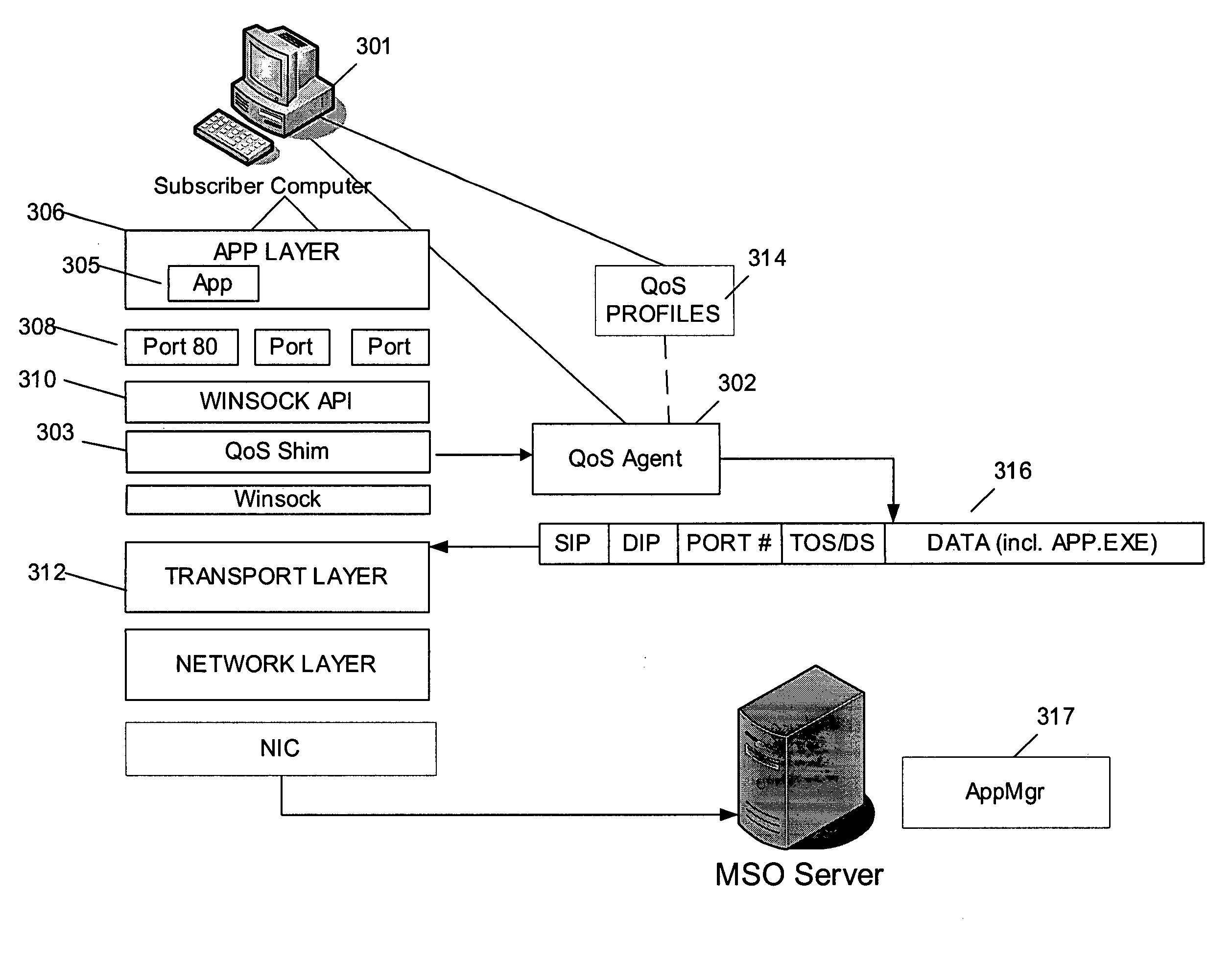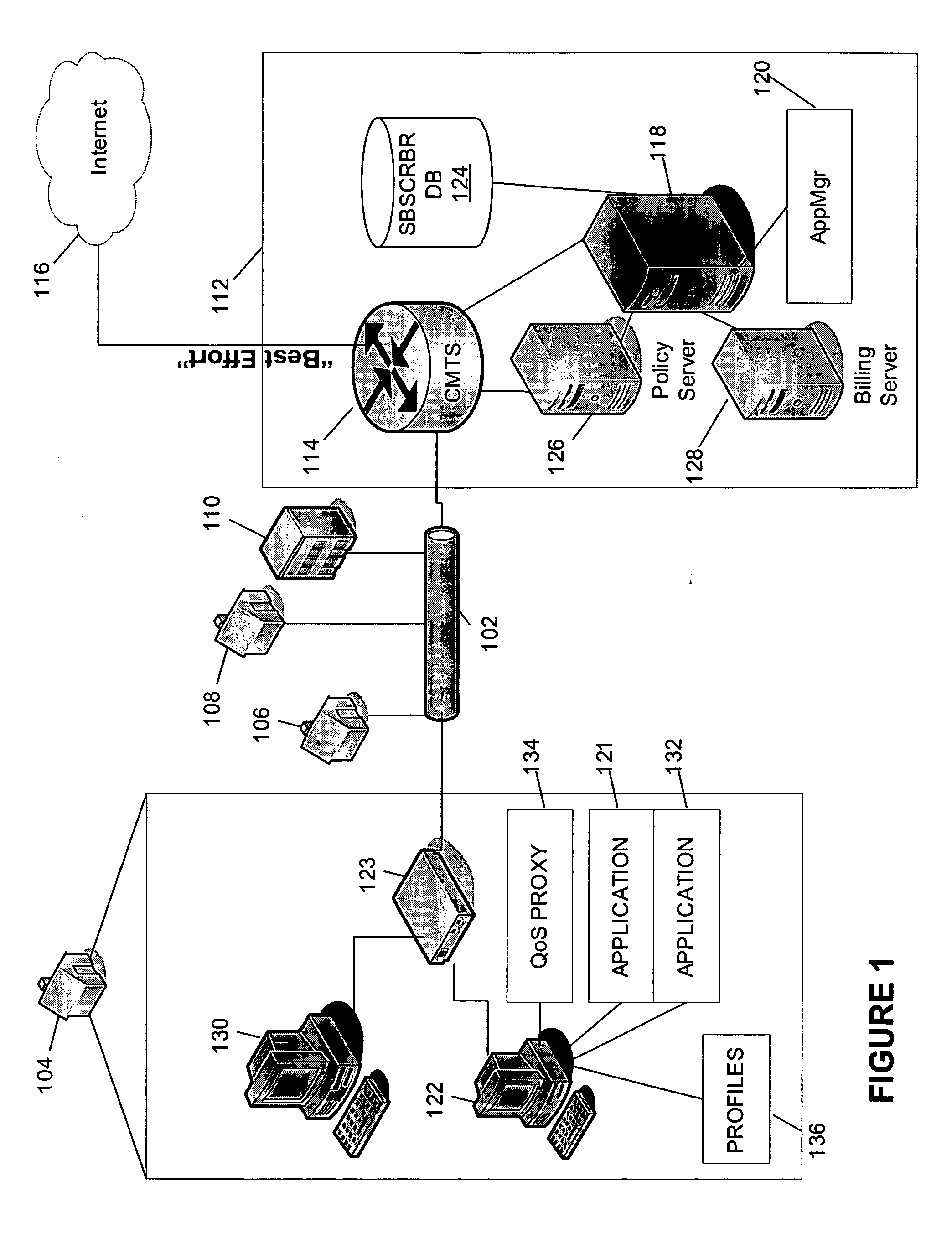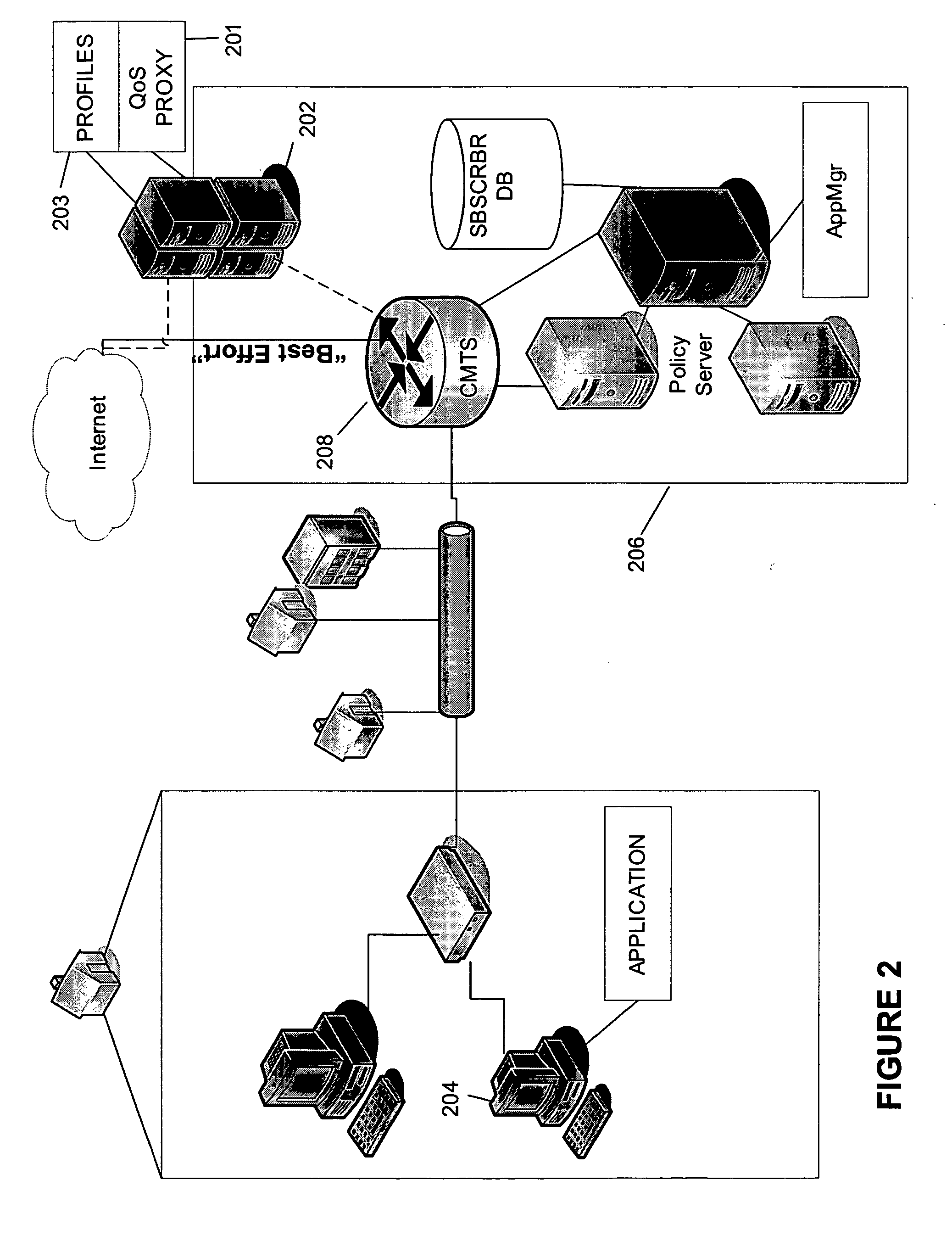Managed quality of service for users and applications over shared networks
a technology of shared networks and quality of service, applied in the field of computer networks, can solve the problems of preventing applications from becoming truly “network aware” and unable to re-allocate network resources, and achieve the effect of increasing the revenue of a network service provider
- Summary
- Abstract
- Description
- Claims
- Application Information
AI Technical Summary
Benefits of technology
Problems solved by technology
Method used
Image
Examples
Embodiment Construction
[0034] The problem of managing quality of service (QoS) in shared networks is a growing problem facing the broadband industry. For example, in existing cable networks, there is a bottleneck for providing necessary QoS for VoIP in the upstream direction. Cable networks use a time-division-multiplexing (TDM) based protocol to assign transmission opportunities (known as mini-slots in cable modem terminology) to the cable modems. To ensure that QoS (jitter, latency, and bandwidth) meets the VoIP requirements for the duration of the call, the cable modem termination system (CMTS) (e.g., centrally located cable router) reserves the resources (mini-slots in the upstream and bandwidth in the downstream) for the call when it receives a QoS request from a session initiated protocol (SIP)-based softswitch (packet switching platform). When the call is finished it releases the resources.
[0035] Cable networks are usually engineered for 2000 users to share a ˜36 Mbps downstream channel and for 50...
PUM
 Login to View More
Login to View More Abstract
Description
Claims
Application Information
 Login to View More
Login to View More - R&D
- Intellectual Property
- Life Sciences
- Materials
- Tech Scout
- Unparalleled Data Quality
- Higher Quality Content
- 60% Fewer Hallucinations
Browse by: Latest US Patents, China's latest patents, Technical Efficacy Thesaurus, Application Domain, Technology Topic, Popular Technical Reports.
© 2025 PatSnap. All rights reserved.Legal|Privacy policy|Modern Slavery Act Transparency Statement|Sitemap|About US| Contact US: help@patsnap.com



